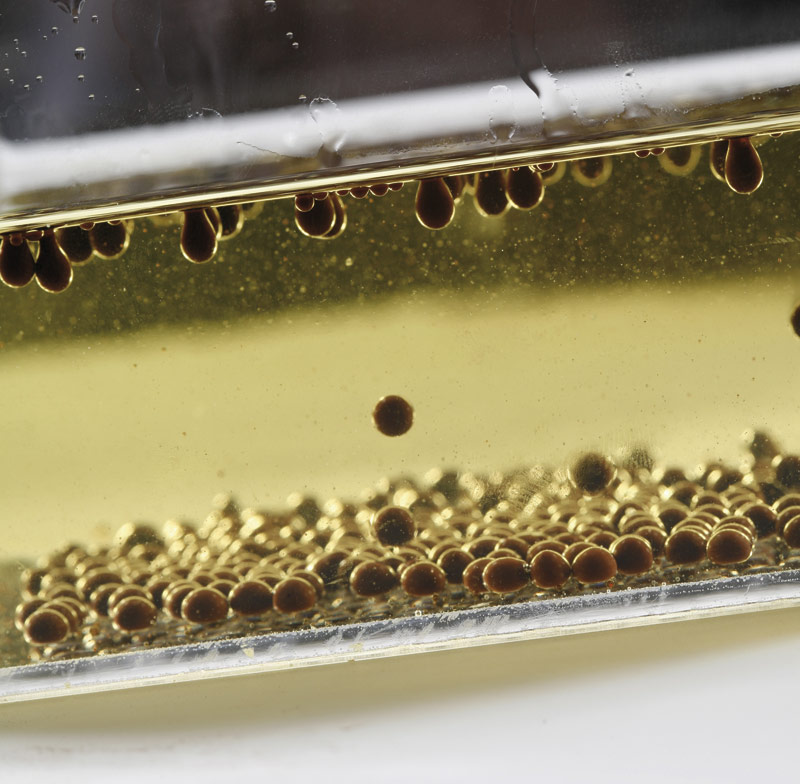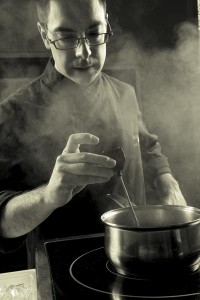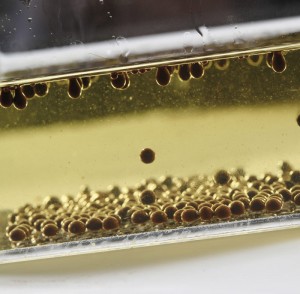Categories Pastry Chef Articles
Jordi Puigvert: ‘I’ve always been determined to improve and simplify the recipes’

The publication of Evolution. Techniques and ingredients for modern pastry offers a wide range of technical possibilities so far unknown to artisanal bakeries. His author, the international consultant Jordi Puigvert, is a versatile pastry chef with an extended research career in pastry and general cuisine. Grupo Vilbo presents the result of Puigvert’s rigorous work in a book which gathers the most innovative applications and last-generation ingredients. Simple preparation processes with the most common machinery found in a workroom will now allow all kind of professionals to break with some technical limits which traditional pastry had set in processes of preparation, preservation, textures and structures of components as important as meringues, mousses, fruit creams and gels.
In this interview, Jordi Puigvert explains to us what we can find in this generous book, in which he shares his knowledge and shows all of these new applications step by step. As he states, the great aim of Evolution is to respect all that has been useful for traditional pastry so far, but developing recipes and processes in order to obtain better results.

What do you propose in this book?
Nowadays, some people believe that a product loses its value if both its recipe and preparation process haven’t been made in a complicated way. This book opts for the use of avant-garde and last-generation ingredients, but in the simplest way, always with the aim of improving what pastry can already offer. What I propose is to make one step backwards and simplify the preparation process considerably. I do not intend to change anything in classic pastry, as every classic product definitively works, is good and is widely used. The real aim here is to make recipes and processes evolve.
And how can recipes and traditional processes be made to evolve?
I’ve always been determined to find the way to improve and simplify the recipes. This is part of innovation itself. But in order to follow a correct, significant and sensible evolution, there has to be a previous process of refection and research into the reasons and causes of everything which has been made, as well as into the technical and taste details of traditional recipes. It is necessary to devote long hours to the understanding of manufacturing processes and to the cause of the reactions of each technique and of the combination of different ingredients. From this point, a more technical work starts. With a total respect for tradition and being humble, I intend to get something positive, new and appropriate to nowadays’ gastronomic trends.
In Evolution, we will see how a clearer flavor in the final product is obtained. We will also get a better mise en place and preservation of the resulting product. We will use no heat in preparations in which cooking is normally involved so as not to distort the flavor of fruit excessively, and –why not– we will introduce products with a lesser sugar and fat content, or even without egg, in order to adapt them to the new food habits and allergies.
Do we need special machines for these ingredients?
Not at all, we can use basic machinery like a stand mixer, and common tools and molds which can be found in any bakery.
Where do these ingredients come from?
At this point, something important should be said: all the ingredients used throughout this book have a natural origin – algae, wheat, potato or other natural products which have been physically modified to be used in a powdered texture. It is necessary to demythologize what people understand as ‘ingredients in white powder’, which is a concept usually linked to chemistry in a negative way. In order to obtain the starch used in this book, for example, physical processes are followed which do not differ much from those to refine confectioners’ sugar.
Why have these ingredients, with so many possibilities, been so close to avant-garde cuisine and so far from artisanal bakeries?
Last years’ culinary trend has been characterized by an unprecedented, overwhelming creativity and an eagerness to innovate and develop dishes and techniques by incorporating products from other countries and last-generation ingredients. However, pastry has always had a tendency to preserve the traditions and avoid risks. This would explain why the ingredients proposed in this book have hardly been used.

How can these techniques and ingredients provide more natural flavors?
The flavors we work with in pastry, such as vanilla, chocolate or praliné, are often disguised. In order to obtain the highest taste purity of the product, egg –which has its own flavor– can be replaced on certain occasions by other more neutral ingredients. But a large number of other techniques are also shown.
One of the most common problems is the preservation of the finished products.
Some creams do not withstand freezing processes or positive cold. Their starches and gelatins lose water and can become unstable when exposed to acidic or fatty products. In this book, we introduce applications of ingredients which can provide water with a greater stability during the processes of preservation and defrosting, while keeping all its organoleptic and functional properties totally intact.
The habits of a healthy diet have also reached pastry. How can the sugar or fat content be reduced?
The amount of sugar has to be only the necessary, as we could otherwise kill the flavor and aromas of the product. Likewise, if too little sugar is used, our products will be less tasty and the pleasure which a pastry product gives us would therefore diminish. Through the use of some stabilizers and proteins, the book introduces techniques which allow us to make meringues with a greater stability and structure by using a smaller amount of the sugars which traditionally carry out this technical task.
In Evolution, we also replace the common fats by other ingredients which can give the same feeling of creaminess and have several other advantages.
Is it still a long way to go regarding the application of new textures in artisanal bakeries?
I’m totally sure it still is, as regards of preservation of the product, manufacturing and creativity. The publication of this book can awake a great interest. There are a lot of good professionals who can offer so many things, who can use these products in different ways, with another point of view.


